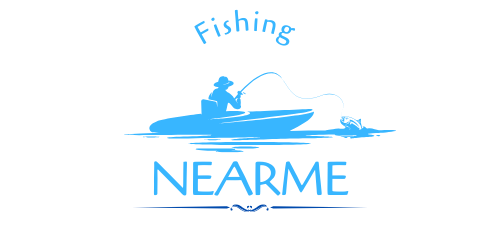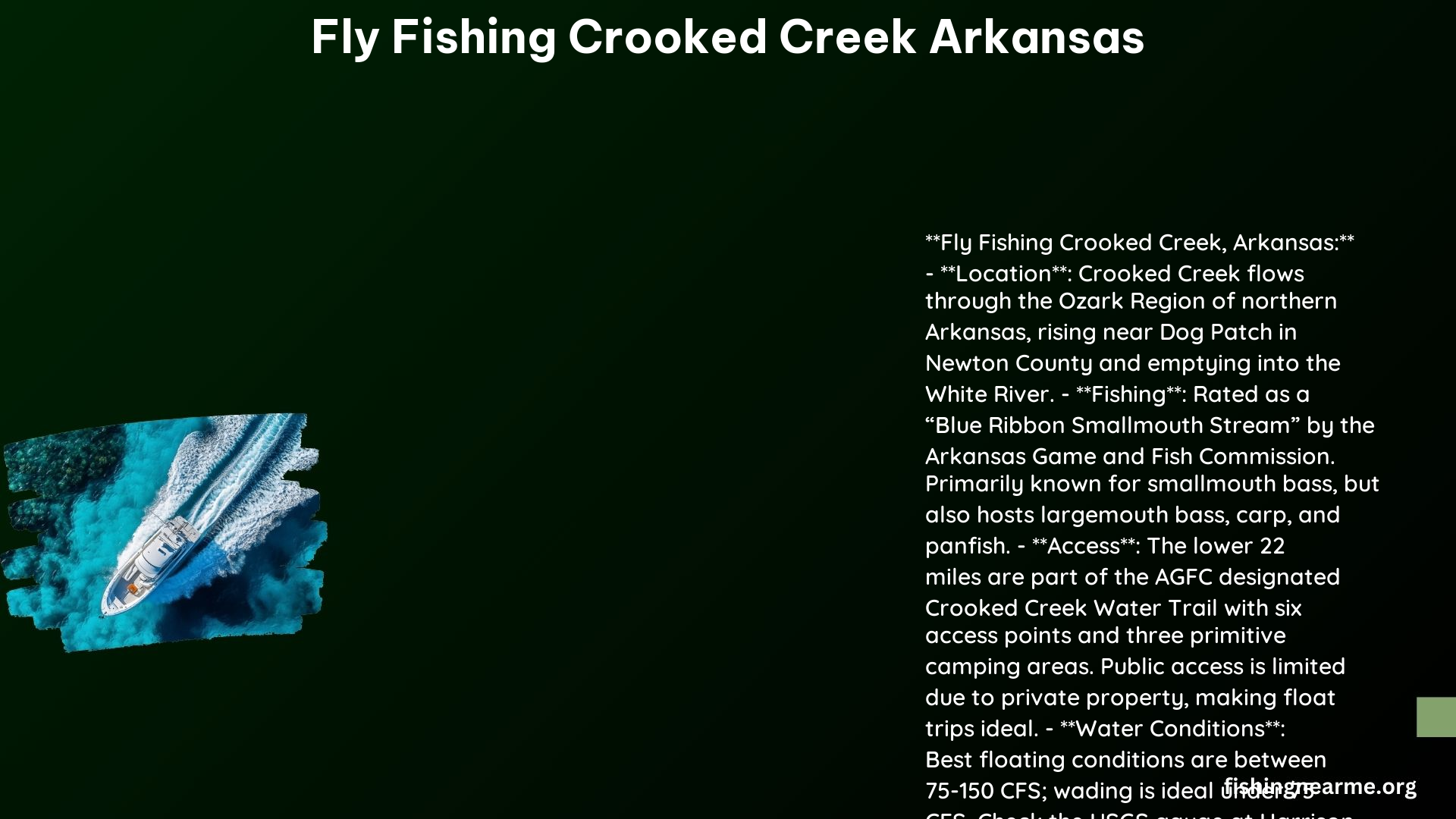Crooked Creek in Arkansas is a premier destination for fly fishing enthusiasts, particularly those seeking smallmouth bass. This scenic waterway offers diverse fishing opportunities throughout the year, with prime seasons from April to October. Anglers can expect challenging yet rewarding experiences, utilizing techniques like streamer fishing and nymphing. This guide provides comprehensive information on techniques, flies, regulations, and access points for successful fly fishing on Crooked Creek.
What Makes Crooked Creek a Prime Fly Fishing Destination?
Crooked Creek, nestled in the heart of Arkansas, is renowned for its exceptional smallmouth bass population. The creek’s diverse habitat, including rocky structures and grassy patches, provides ideal conditions for these hard-fighting fish. Additionally, the presence of other species like largemouth bass and panfish adds variety to the angling experience.
Key features that make Crooked Creek attractive for fly fishing include:
- Clear, cool waters
- Scenic Ozark Mountain backdrop
- Abundant smallmouth bass population
- Varied water conditions suitable for different fly fishing techniques
What Are the Best Fly Fishing Techniques for Crooked Creek?
Streamer Fishing
Streamer fishing is the go-to technique for targeting smallmouth bass in Crooked Creek. This method involves:
- Casting large flies near structure (rocks, logs, grassy areas)
- Retrieving with erratic movements to mimic injured baitfish
- Using weighted streamers to reach deeper pools
Nymphing
While less common, nymphing can be effective, especially in slower currents:
- Use smaller nymphs imitating local aquatic insects
- Focus on deeper pools and runs
- Employ a strike indicator for better bite detection
Dry Fly Fishing
During hatches or when fish are surface feeding:
- Cast upstream and allow the fly to drift naturally
- Target riffles and seams where fish may be holding
- Be prepared to switch to subsurface techniques if surface activity is minimal
Which Flies Are Most Effective on Crooked Creek?
Streamers
- River Slick Minnow (local favorite)
- Slump Buster
- Clouser Minnow
- Woolly Bugger
Poppers
- Bass Popper
- Deer Hair Diver
Nymphs
- Hare’s Ear
- Pheasant Tail
- Copper John
Dry Flies
- Elk Hair Caddis
- Adams
- Stimulator
What Are the Fishing Regulations for Crooked Creek?
License Requirements
- Arkansas fishing license required for all anglers
- Available for residents and non-residents
- Can be purchased online or at local retailers
Catch Limits and Size Restrictions
| Species | Daily Limit | Minimum Length |
|---|---|---|
| Smallmouth Bass | 6 | 12 inches |
| Largemouth Bass | 10 | 12 inches |
Note: Always check current regulations as they may change
Special Regulations
- Artificial lures only in some sections
- Catch and release encouraged for conservation
When Is the Best Time to Fly Fish on Crooked Creek?
Seasonal Patterns
- Spring (March-May): Pre-spawn activity, increasing water temperatures
- Summer (June-August): Peak smallmouth activity, lower water levels
- Fall (September-November): Aggressive feeding before winter
- Winter (December-February): Challenging conditions, but still possible
Water Conditions
- Ideal flow: 300-500 CFS
- Clear water preferred for sight fishing
- Higher flows (700+ CFS) can be productive but challenging
Where Are the Best Access Points for Fly Fishing Crooked Creek?
- Kelly’s Slab
- Popular starting point for float trips
-
Ample parking and easy river access
-
Kelly Access
- Meeting point for guided trips
-
Good wading opportunities nearby
-
Yellville Access
- Convenient take-out point for float trips
-
Offers bank fishing options
-
Fred Berry Conservation Education Center
- Educational programs available
- Access to prime fishing areas
What Equipment Is Necessary for Fly Fishing Crooked Creek?
Rod and Reel
- 6-7 weight fly rod
- Large arbor reel with smooth drag
Lines and Leaders
- Weight-forward floating line
- 9-foot leaders in 2X-4X
Accessories
- Waders and wading boots
- Polarized sunglasses
- Net suitable for bass
- Fly box with assorted patterns
How Can Anglers Practice Conservation on Crooked Creek?
- Practice catch and release, especially for larger bass
- Use barbless hooks to minimize fish injury
- Avoid disturbing spawning areas during breeding seasons
- Pack out all trash and fishing line
- Report any pollution or illegal fishing activities to authorities
By following these guidelines and respecting the natural environment, anglers can help preserve Crooked Creek’s exceptional fishery for future generations.
References:
1. Fly Fishing With Jeff
2. The Ozark Fly Fisher
3. Flys and Guides

